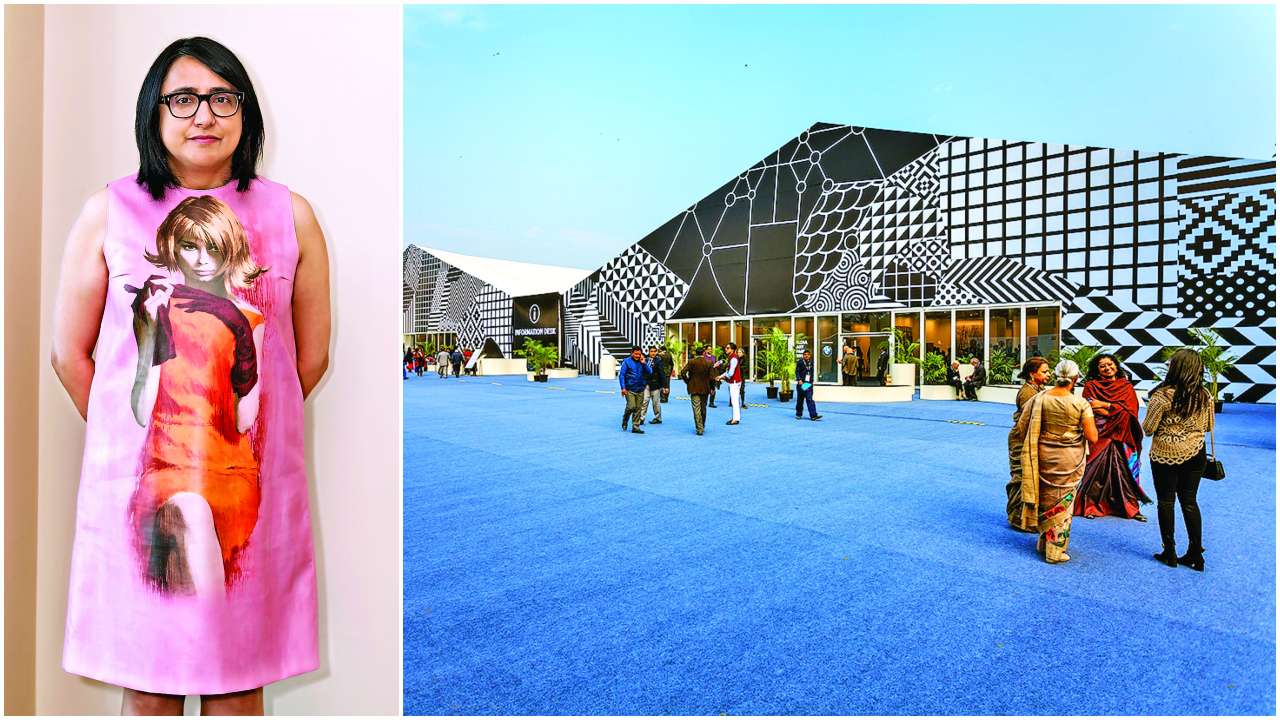
It's the run-up to India Art Fair (IAF), a busy time for its Director Jagdip Jagpal. But she's snatched a half-hour to meet over tea at an outlet down the corridor from the fair's office located in a repurposed mall in south Delhi, which is also home to the Kiran Nadar Museum of Art. The first copies of a magazine that the fair is bringing out on the occasion had just come in, and Jagpal is excited.
The magazine, one of the new incremental changes that the director has brought in, replaces the rather dull catalogues that the fair has released until now. Instead of pages upon pages devoted to gallery exhibitors, with drab photographs and information, the magazine has been conceived as a 'companion' to the fair, with snappy articles on artworks at the fair, artist profiles and interviews.
The 11th edition of the three-day annual jamboree, comes at the head of a full year as Director – Jagpal had taken over barely six months before the last. Jagpal is a British national who'd worked in senior positions in galleries and museums in the UK, before she came to head IAF. The past year has been a time of learning, especially on "how to do business in India", and problems created by the shortage of skilled manpower in the arts sector. As for the arts scene, she continues to be struck by "the new collectives...the art start-ups, the residencies, and the desire to build more museums".
Jagpal has expropriated some of this new experimental energy to showcase at the Fair, over and above its regular programme which includes, this year, 75 galleries from 24 Indian and international cities, showcasing some very famous artists – Ai Weiwei, Satish Gujral, Thota Vaikunthan, Idris Khan, Krishna Reddy, et al. So, there's a sculptural piece by Satyabhama Majhi from the inaugural Bhubaneswar Art Trail, organised by artist Jagannath Panda last November; archival images of Nepalese women in 'The Feminist Memory Project' – part of Photo Kathmandu; posters, prints, videos, etc., by St+art Foundation, a street art collective; and a space for performance artists – a first at IAF – by "heavy-hitters" like Mithu Sen, Sajan Mani, Amol Patil, Yasmin Jahan Nupur from Bangladesh, among others. "I think it'll bring the fair to life a little bit," laughs Jagpal.
For the first time, the Fair will have a Guide Map in braille, with braille books, catalogues and tactile versions of art projects. Starting next year, Jagdip is also "exploring how to extend the portfolio of the IAF beyond the Delhi art fair". Smaller fairs in other cities? Jagpal is not revealing anything.
As for the announcement last November by MCH Group, the Swiss company that owns a majority stake in IAF, that it's looking to sell its stake, "it doesn't affect us", Jagdip says. The announcement is not a reflection of the fair, she says, "but of MCH's problems with the core part of its business". For now, it's time to celebrate Indian art.